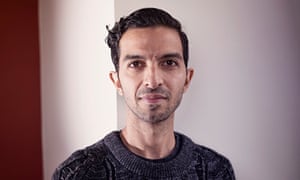Play nice! How the internet is trying to design out toxic behaviour
The idea of a “nicer” net sounds a bit twee, guaranteed to enrage libertarians who fear the creation of bland, beige safe spaces where free speech goes to die. But it’s an idea with some big guns behind it, and what they are advocating isn’t censorship, but smarter design. This month at the Sundance film festival, the web pioneer Tim Berners-Lee called on platforms to start building “systems that tend to produce constructive criticism and harmony, as opposed to negativity and bullying”.
In Britain, Yvette Cooper, who endured some grim misogynistic online abuse when she was campaigning to become Labour leader, is planning a “reclaim the net” summit, examining ways of building a kinder, more civilised culture. “When they’re talking to politicians, people should be able to disagree and say so strongly,” she says. “But when it’s about bombarding people who are not in public life with aggressive abuse, that’s where it becomes a problem, if it starts to silence people. You hear teenage girls saying, ‘Right, I’m going to stop saying anything about feminism on Facebook because it’s just so hostile.’” This isn’t about censoring free speech, but protecting it, she argues, for those now being bullied out of the conversation.
Technology was supposed to make the world a better place, not a bitchier one. And for the big corporate players –Twitter, Instagram, online publishers and other businesses reliant on us spending more and more time online – it’s a genuine commercial threat. Few users and fewer advertisers enjoy hanging out in a room full of furious people spoiling for a fight.
Discusses the increasing threats of online harassment and employs solutions for it.
business of fasion boss: 'people on the inside dont see how exciting it is'
How founder Imran Amed turned a bedroom blog into a must read for a trillion dollar industry

Why would a digital company – a site with 850,000 monthly visitors, with an events arm and a growing fashion careers and recruitment portal – put out a physical magazine? It was mainly a marketing thing, says Amed, to launch the BoF500, a list of the 500 most powerful people in fashion. “Putting it in print added value to it.” A modern media company, he says, needs to exist in multiple spaces. So BoF has run events, including ambitious plans for a huge one – a kind of TED for the fashion industry – towards the end of the year, and “they need to exist in print, in digital, in social, in video”.
Amed does everything from editing and writing to moderating comments and meeting industry contacts. “My main job is to get involved early deciding what pieces we’re going to concentrate on. We’re not a big company, not a big team, so I want to make sure we’re allocating [our resources] on things that are really fundamental and important to what people are thinking about.”

No comments:
Post a Comment